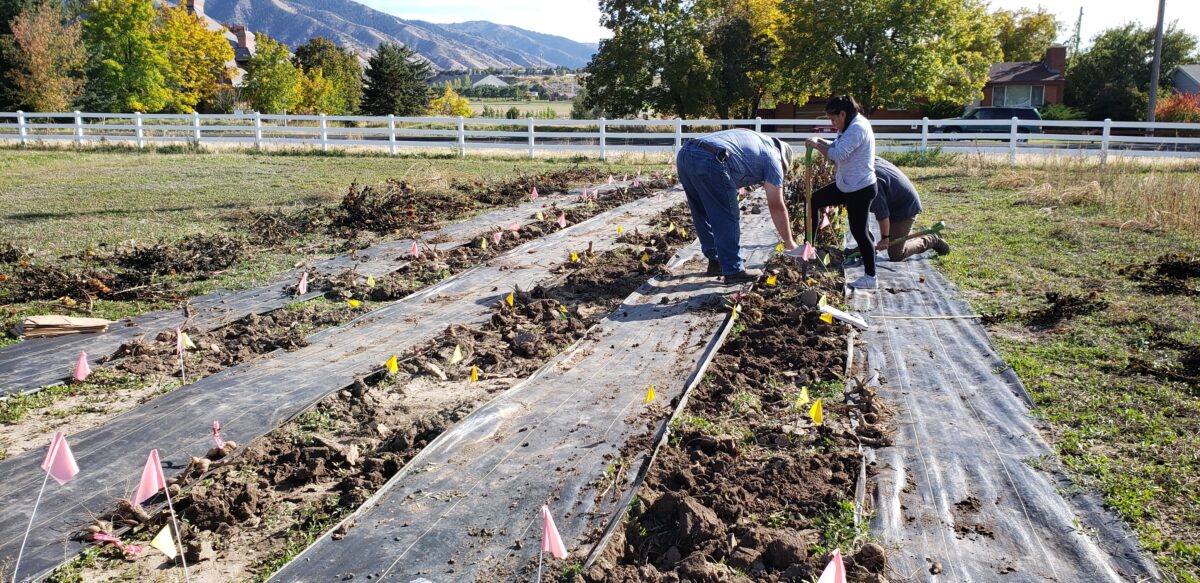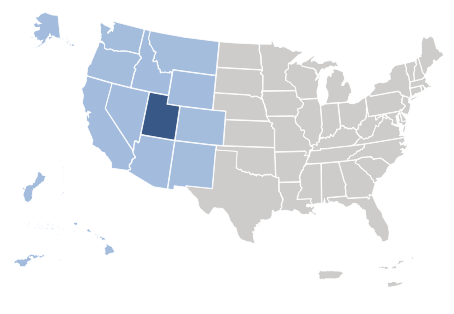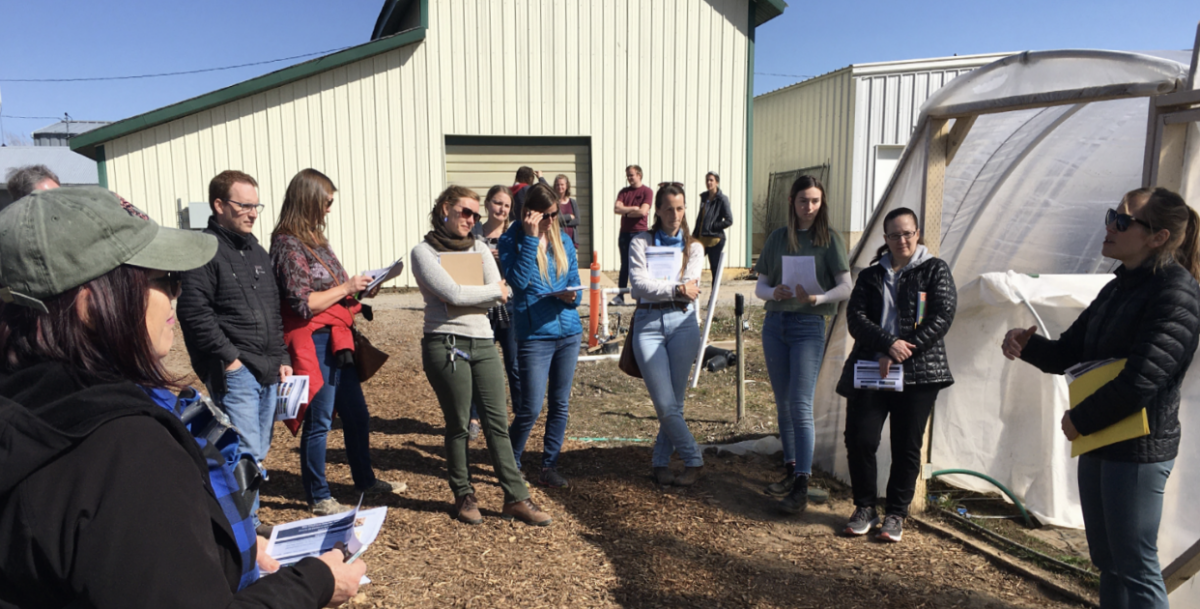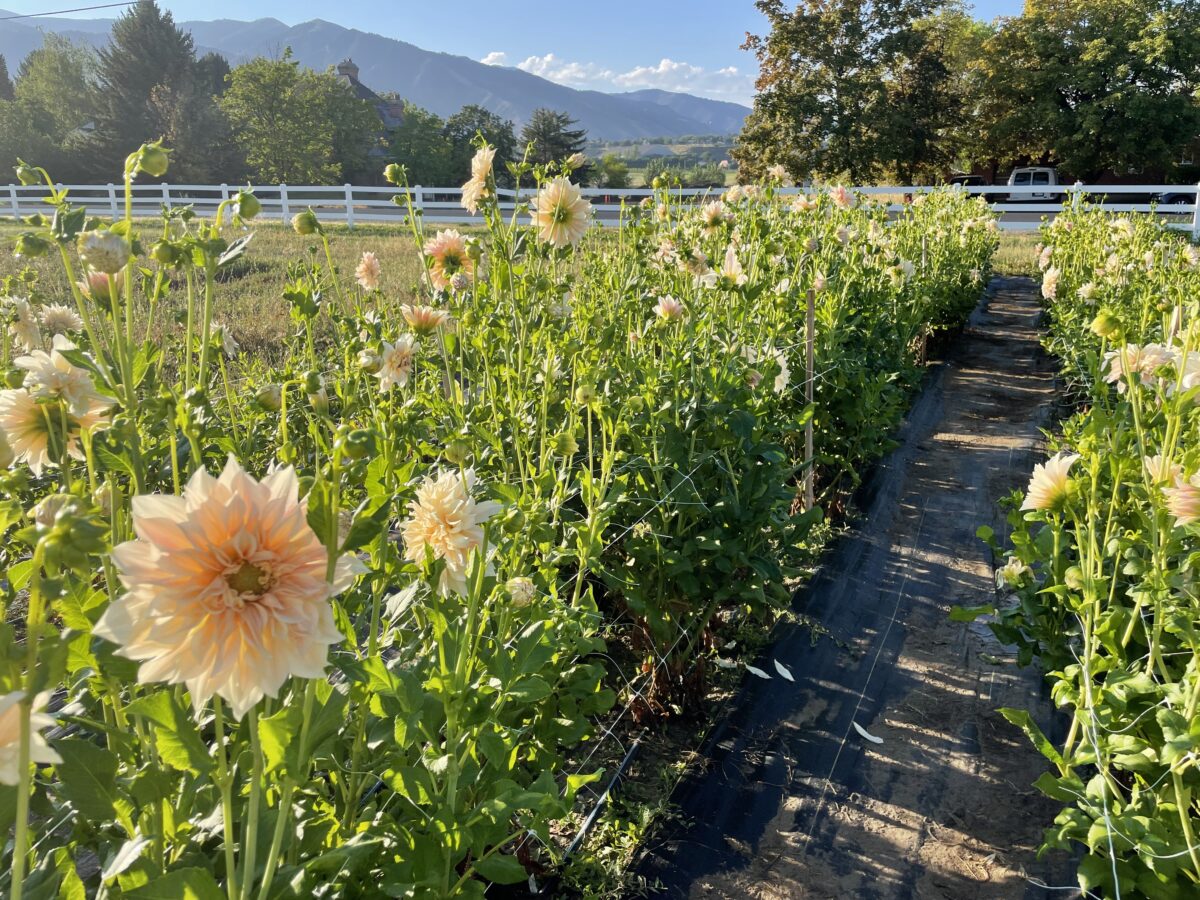
Early career researcher develops an innovative line of cut flower research benefitting women and small-scale farmers.
The goal of this project was very simple—work with farmers to figure out nitrogen fertilizer rates for dahlia, but it turned into an amazingly complex case.”
—Dr. Melanie Stock, Partnership Grantee
Mosaic Virus Discovered to be Rampant in Dahlia Stock

Region: Western
State: Utah
Grant Type: Partnership
Grant: OW19-346
SARE POST-PROJECT EVALUATION IMPACT MODEL
This evaluation impact model is specific to this SARE-funded project.
Sustainability Impacts
The project grantees and stakeholders contributed to the following sustainability impacts:
- Environmental sustainability impacts
- Economic sustainability impacts
- Production efficiency impacts
- Social sustainability impacts
Grantee Indicators
(University Professor, Extension Specialist)
Project grantees (defined above) achieved sustainability impacts by engaging with the following indicators through involvement with project activities:
- Increased knowledge/skills
- Increased capacity/motivation
- Increased engagement
- Practice change
- Career growth
Stakeholder Indicators
(Farmers, University Collaborators)
Project stakeholders (defined above) achieved sustainability impacts by engaging with the following indicators through involvement with project activities:
- Increased knowledge/skills
- Increased capacity/motivation
- Increased engagement
- Practice change
- Career growth
The Success Story
Cut flowers are premium crops that Utah’s small farms can grow. Statewide, nearly 200 farms now specialize in this high-demand commodity. Yet Utah’s mountain terrain and semi-arid climate make growing conditions challenging. Intense sunlight, temperature variation, canyon winds, soil quality, and water quantity can limit yields. These challenges are exacerbated by over-application of nutrients through unsustainable use of soil amendments that have impacted soil health, long-term productivity, and introduced environmental sustainability risks such as elevating the soil salinity . In partnership with small-scale producers with cut flower enterprises on their urban farms, Dr. Stock generated new knowledge about how to successfully grow a finicky, high-demand dahlia cultivar and pioneered the broad delivery of bite-sized learnings through a large, informal network on Instagram that supplemented traditional, annual grower events.
This project was prompted by a need I saw in the community. ... Cut flowers were taking off in the state. We targeted dahlia because it’s the top cut flower for our farmers to grow. It’s this niche that our local farmers can take advantage of compared to wholesale imports.”
—Dr. Melanie Stock, Partnership Grantee

Grantee (University Professor, Extension Specialist) Highlights
This project, the first grant-funded study which Dr. Stock wrote for cut flower research, catalyzed nutrient management research, as well as an unexpected new line of research on virus and pest management that continues between the USU Small Farms Lab and Utah Plant Pest Diagnostics Lab and has informed numerous publications. The project sparked new collaborations with university-based researchers including a plant pathologist who developed a niche specializing in cut flower diseases and pests and applied economists who quantified the relationship between crop management, yield, and profitability.
A Domino Effect of Knowledge Sharing Among Urban Farmers
One of my SARE grant farmers was testing her soil. Someone online was asking questions about soil management and nutrients and she wrote a response passing along my message about sustainable nutrient management, so there’s that domino effect. Now farmers are sharing it with other farmers. They can reach each other in ways that I can’t.”
Dr. Melanie Stock, Partnership Grantee
Other Stakeholder (Farmer, University Collaborators) Highlights
Six small-acreage farms that were predominantly women-owned contributed to the project as producer-collaborators. The grant funded soil testing twice per year, which Dr. Stock referenced to provide individualized recommendations for improved soil health and crop production. As a result, nutrient loading has decreased and soil nutrient levels have plateaued. Beyond the small group of farmers who participated directly in the research, Dr. Stock leveraged Instagram to share learnings with thousands of followers in “small bites” that are more digestible to supplement fact sheets and in-depth workshops. Much of the community’s learning has centered on soil health and identifying diseases and pests. For example, users have demonstrated more interest in buying certified stock to avoid introducing viruses into their crops.
Sustainability Impacts
Stock’s research has prompted urban farmers to employ data-informed soil management to floriculture. The information is helping them reduce production costs by avoiding overuse of soil amendments that also reduced soil and plant health. As a result, they are achieving greater yields, which contributes to the sustainability of their enterprises. Even more noteworthy, many of the women getting involved in cut flower cultivation in the region are significantly contributing to their families’ incomes. Stock has observed that they now include farmer along with mother and homemaker in their self-identities.

Barriers
Most dahlias are propagated asexually from tubers or cuttings for cut flowers, which can accumulate virus and make sourcing clean stock difficult. One year of the study was heavily compromised by several viruses identified by USU’s plant pathologist, Dr. Claudia Nischwitz. After determining the field was infected with yield-compromising viruses, the project was extended for a year to source new stock for the nutrient study and explore industry options and testing.
A New Line of Research
Two main themes that came out of this study are still significant today. Soil fertility management is a huge part of my extension programming for all small-scale farmers. The other is reducing disease in cut flowers.
—Dr. Melanie Stock, Partnership Grantee
Contributors
When Dr. Stock discovered the tubers carried a virus, she was initially concerned about requesting an extension. Fortunately, Western SARE was “wonderful” to work with, approving the request to extend for another field season without issue. With the extension, Stock was able to broaden her project and engaged additional collaborators; she expects to continue studying cut flowers, including dahlias, for many years to come.
SARE Supports Non-Traditional Research
This was my first significant grant [for cut flowers] and it propelled my program significantly. Sometimes it’s a vicious cycle where you need to show your expertise and publication history, but you can’t really develop that until you start getting grants and having projects. I so appreciate that Western SARE trusted me and was open minded, not just about me being an early career PI, but also, I am studying cut flowers, a non-traditional agricultural crop that is brand new in the state.”
—Dr. Melanie Stock, Partnership Grantee

